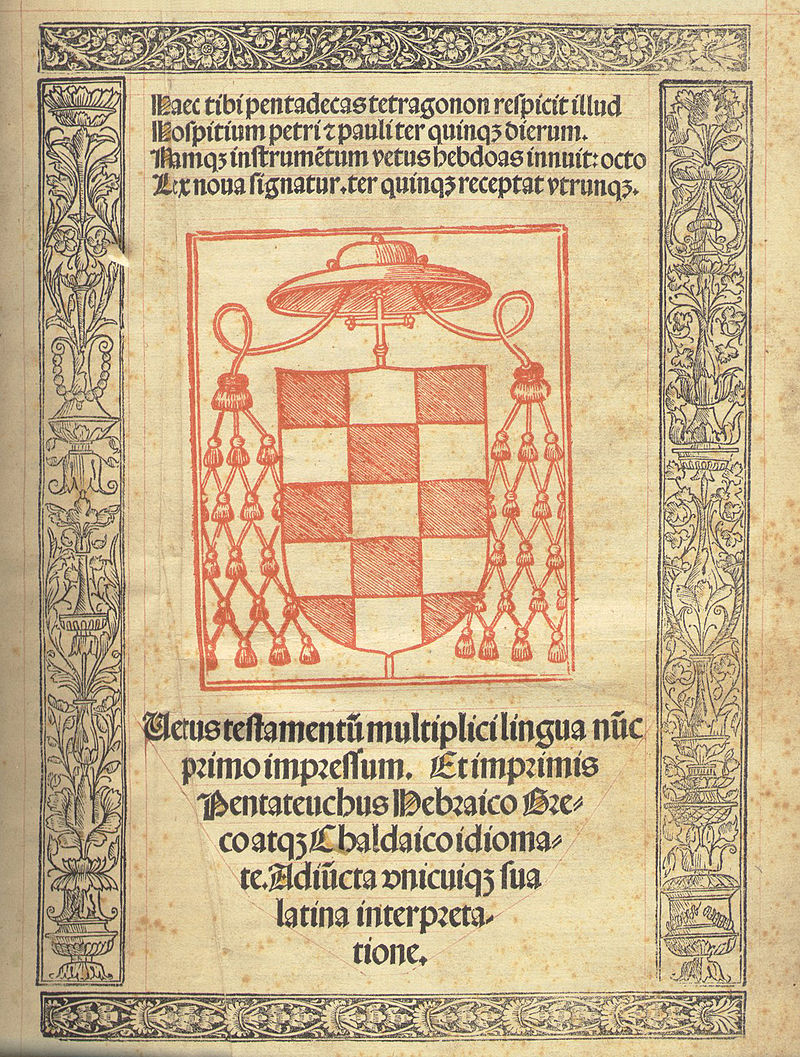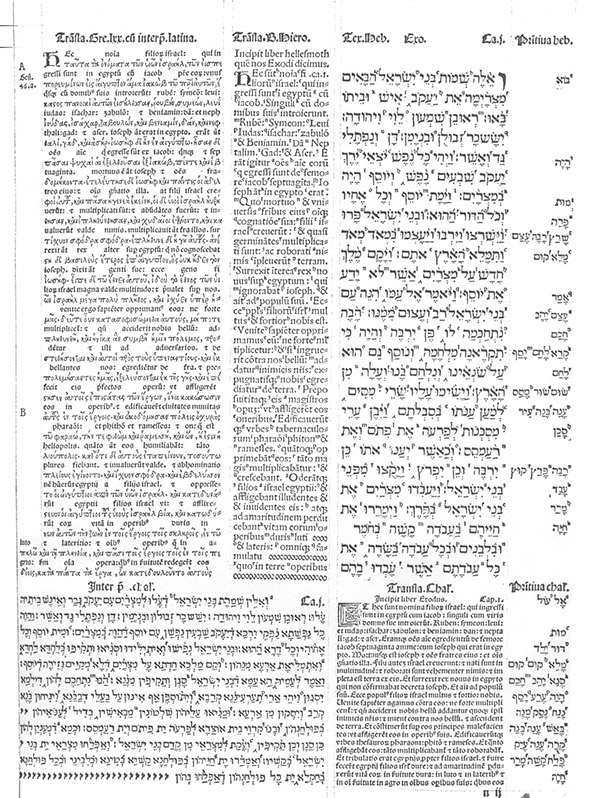New Exhibit Opens on the Art And History of the Pre-Modern Bible
Part art, part history, the Museum of Texas Tech University opens a new exhibition, "Pre-Modern Bibles: From the Dead Sea Scrolls to the Complutensian Polyglot Bible" Saturday (Aug. 18). The exhibition, co-curated by Janis Elliott, associate professor of art history and John Howe, professor of history, will run through March 3, 2019.
 Complutensian polyglot Bible (Rome, Library of the Society of Jesus?) Frontispiece,
1517‒20.
Complutensian polyglot Bible (Rome, Library of the Society of Jesus?) Frontispiece,
1517‒20.The exhibition features the largest collection of original and facsimile biblical manuscripts ever assembled in West Texas.
"Biblical texts have changed in their format, in modes of interpretation, and in ways of presentation over the millennia," said Elliott. "The exhibition features a variety of bible and their colorful illuminations that focus on biblical scholarship over 1,000 years and its relationship to the development of western civilization in the middle ages."
The exhibit examines how the material Bible came to exist as it does. It also reveals not only the sophistication of pre-modern biblical scholarship but also how it relates to academic traditions today. A highlight of the exhibition is the Complutensian Polyglot Bible whose pages are laid out to include bible passages in four columns in different languages: Hebrew, Greek, Latin, and Aramaic.
"The Complutensian Polyglot Bible is presented as the culmination of a long tradition of themes related to multilingual, cross-cultural, biblical scholarship, which will and demonstrate how the future was transformed by the technology of the printing press," said Howe.
 Complutensian polyglot Bible (Rome, Library of the Society of Jesus) 1517-1520
Complutensian polyglot Bible (Rome, Library of the Society of Jesus) 1517-1520The Complutensian Polyglot Bible was created, in Spain at the end of the Middle Ages. The book and Texas Tech University's architecture can both be traced back to the same source, a university in north-central Spain, the Universidad Complutense at Alcalá de Henares which relocated to Madrid during the 19th century. Architect William Ward Watkin modeled Texas Tech's first building, the Administration Building, on the university at Alcalá.
The exhibition is made possible in part by grants from the Helen Jones Foundation, Inc.; a Civic Lubbock Cultural Arts Grant; and Humanities Texas, the state affiliate of the National Endowment for the Humanities.
Museum of Texas Tech University
-
Address
3301 4th Street, Lubbock, TX 79415 -
Phone
806.742.2490 -
Email
museum.texastech@ttu.edu
